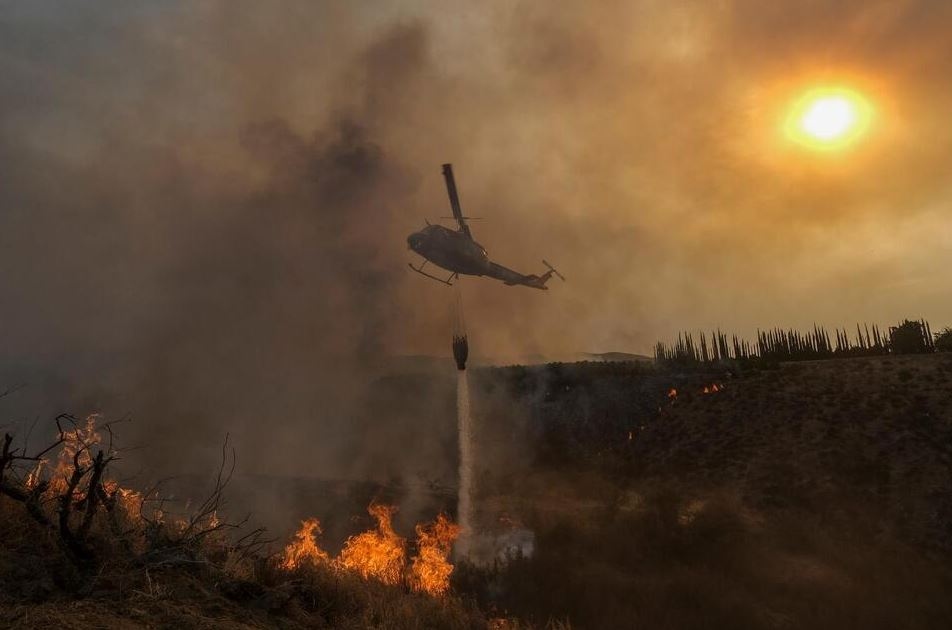The state of California is experiencing a record-breaking heat wave that entered its tenth day on Friday. This record-breaking heat wave has contributed to the fueling of catastrophic wildfires and has pushed energy supplies to the edge of regular power disruptions.
The leftovers of a storm are moving closer, and they will bring with them cooler temperatures throughout the weekend. However, they may also bring with them another set of issues in the form of torrential rainfall, which will be welcome in the drought-stricken state but may produce flash floods.
According to scientific research, climate change is making the world warmer, which in turn makes weather-related calamities more severe. The heat that has caused weather maps to be shaded dark red in California for more than a week is merely a taste of what’s to come in the coming weeks.
According to Jonathan Overpeck, the head of the School for Environment and Sustainability at the University of Michigan, “We’ll see these heat waves continuing to become hotter and hotter, longer and longer, and more wildfire-plagued.”
It all started in Pakistan and India this spring, and since then, fatal heat waves have raced over sections of the Northern Hemisphere, including China, Europe, and other regions of the United States. California is just the latest state to fall victim to this year’s string of deadly heat waves.
Additionally, climate change has made droughts worse, dried up rivers, increased the intensity of wildfires, and led to massive flooding around the world. This is because the moisture that evaporates from land and water is held in the atmosphere by climate change, and then it is redeposited by intense rain.
Heat waves are precisely the kind of changes that scientists believe will become more widespread as a result of global warming. However, scientists are hesitant to tie any one weather occurrence to global warming.
On Tuesday, the temperature in Sacramento reached 116 degrees Fahrenheit (46.7 degrees Celsius), which was a new record. A large number of other locales achieved record highs for the month of September, while many more established new daily high records.
According to Ullrich, throughout the 1970s, the state capital of Sacramento had five days of “severe heat” per year. It now has around 10, but by the middle of this century that number will have more than doubled.
The unprecedented demand for electricity caused by air conditioners continued for nine days, all the way up to Thursday, and it caused the massive energy network that comprises power plants, solar farms, and a labyrinth of transmission lines to strain.
Air conditioning puts the greatest burden on power supplies during a heat wave, and managers of the electrical system have asked for conservation and warned of the potential of power disruptions as demand touched an all-time high Tuesday, shattering a record that had been established in 2006.
It is possible that the state was able to prevent a repetition of the rolling blackouts that occurred two summers ago by issuing a first-ever text warning that blared on 27 million phones. The notice urged residents of California to “take action” and switch off any electricity that was not required. A sufficient number of customers raised their thermostats, switched off lights, and unplugged their appliances in order to prevent power outages; but, thousands of customers did experience power outages at different periods for other causes.
The Western United States is in the midst of a megadrought that has been going on for 23 years, which has practically depleted reservoirs and placed water supplies in peril. This, in turn, led to a significant decline in the amount of hydropower upon which California depends when there is a high demand for electricity.
According to Overpeck, the severe heat contributed to the devastating wildfires that occurred on both ends of the state. The flames fed on grass, brush, and wood that had been “preconditioned to burn” due to the drought, and then the heatwave drove them over the brink.
Firefighters in Southern California and the Sierra Nevada were having a difficult time putting out big wildfires that had surged in size, caused thousands of people to flee, and created smoke that may potentially interfere with solar production and further disrupt energy supply.
At least two individuals lost their lives in the fire that broke out on Friday in the village of Weed, which is located at the foot of Mount Shasta in Northern California. A fire in Riverside County, California, which was threatening 18,000 houses, claimed the lives of two more people who were driving away from the blaze.
From Friday night through Saturday, Southern California is likely to see torrential rainfall and maybe even flash floods as a result of what is left of Hurricane Kay, which has been reduced to the status of a tropical storm. According to Patzert, the presence of strong winds might make it initially difficult and risky for firefighters who are attempting to contain fires.
On mountain slopes that have recently been scorched by fires, heavy downpours may also cause mudslides to occur. Although it is possible that several inches of rain could fall, the most majority of it will be lost to the parched terrain and will not even make a dent in the drought.

